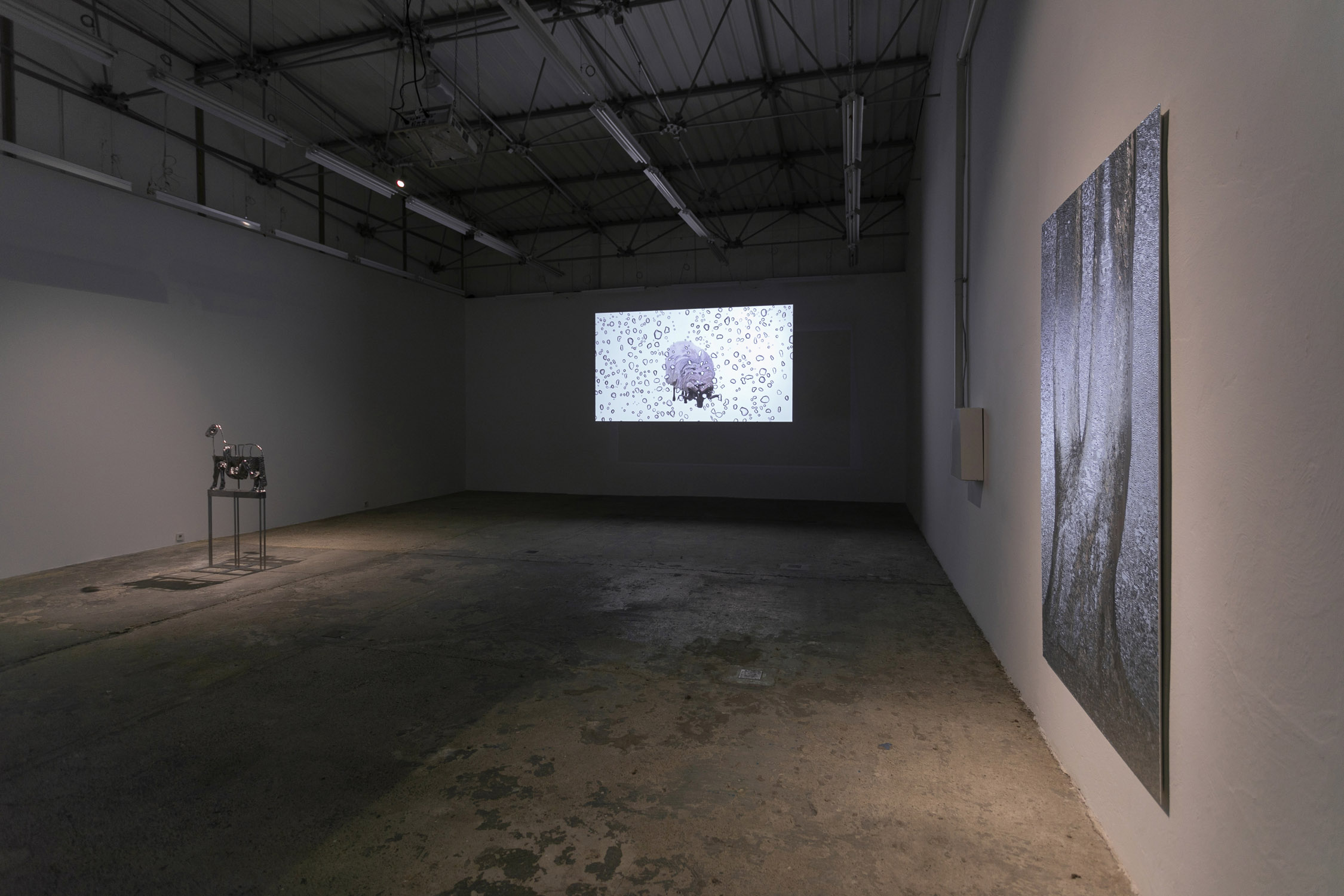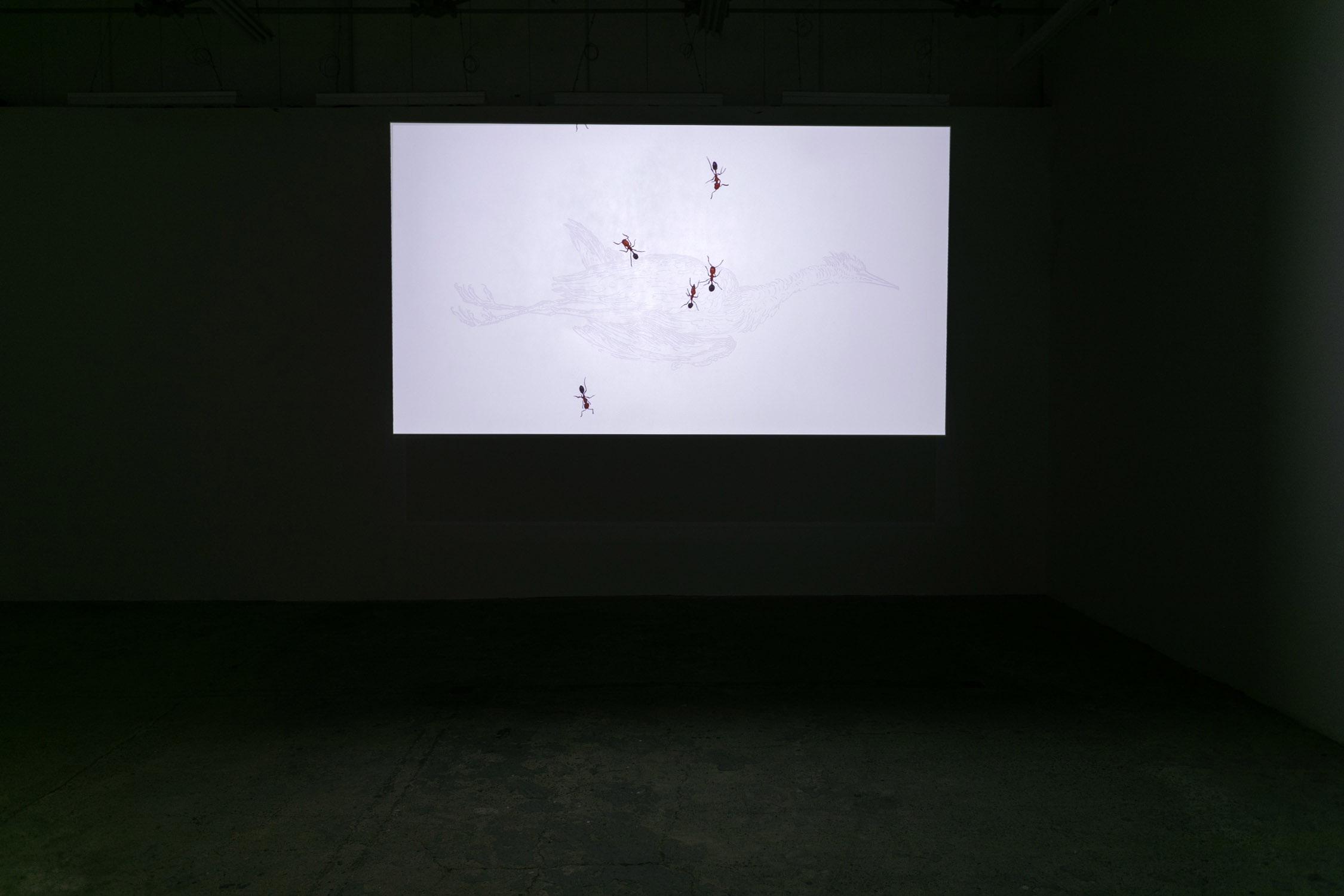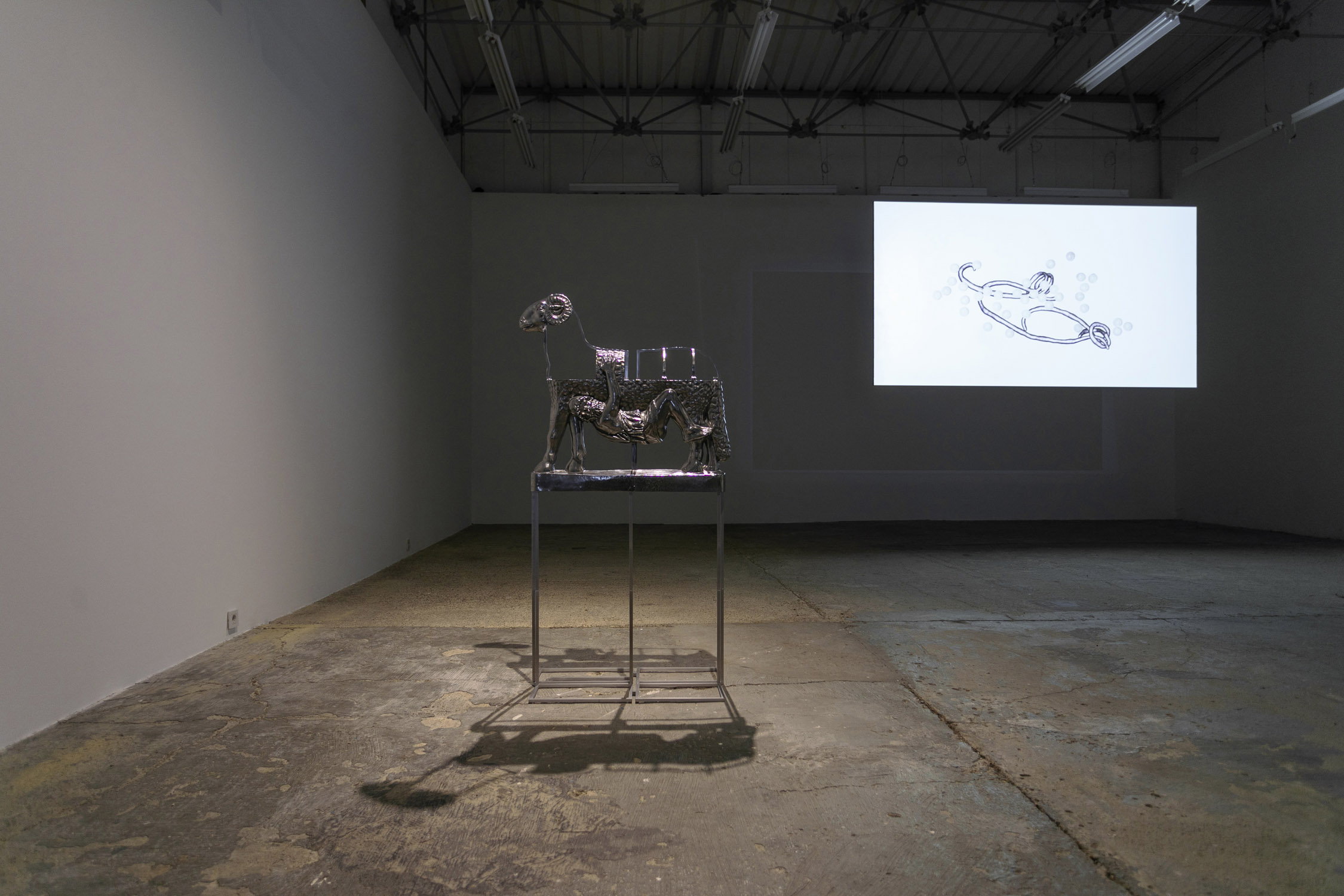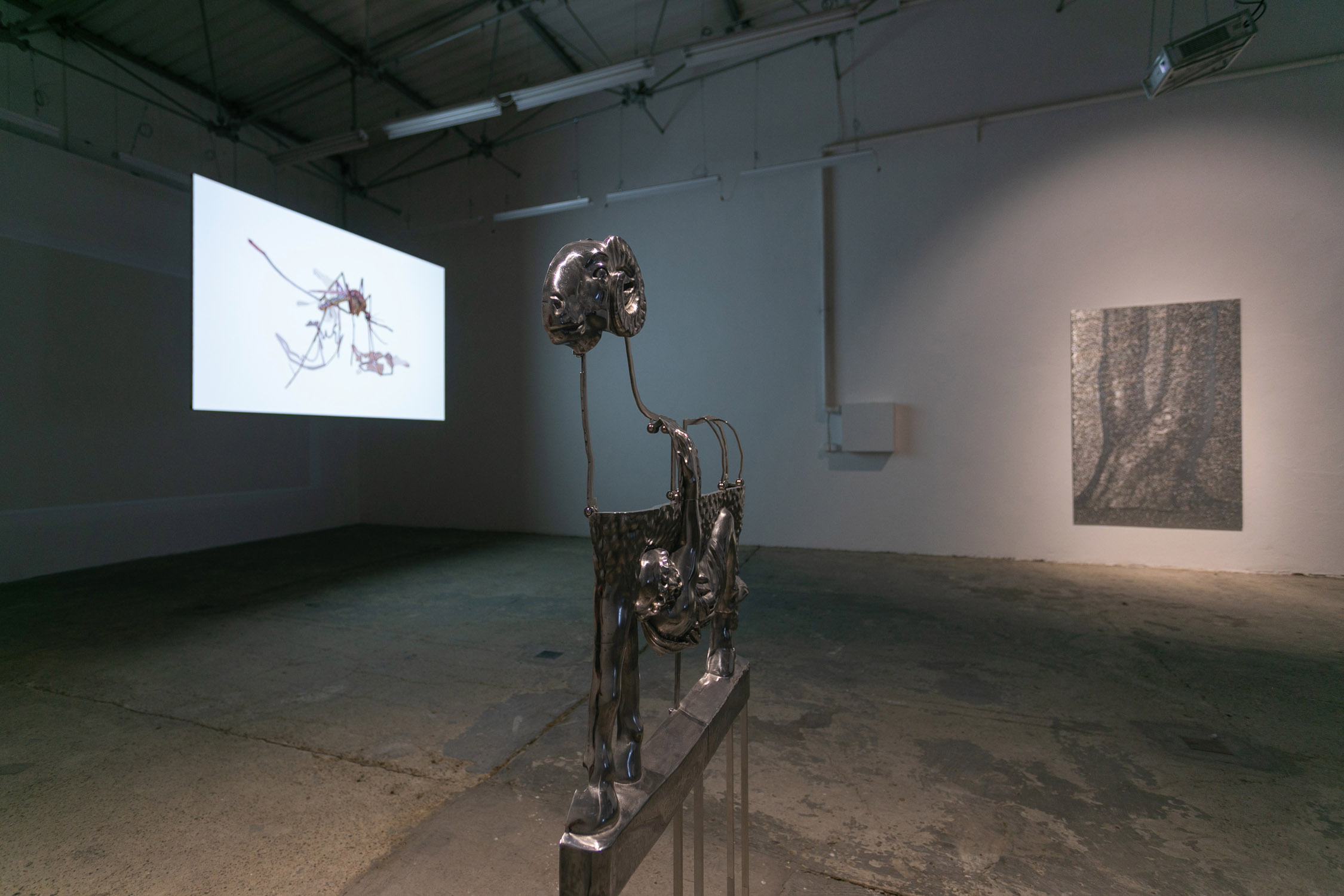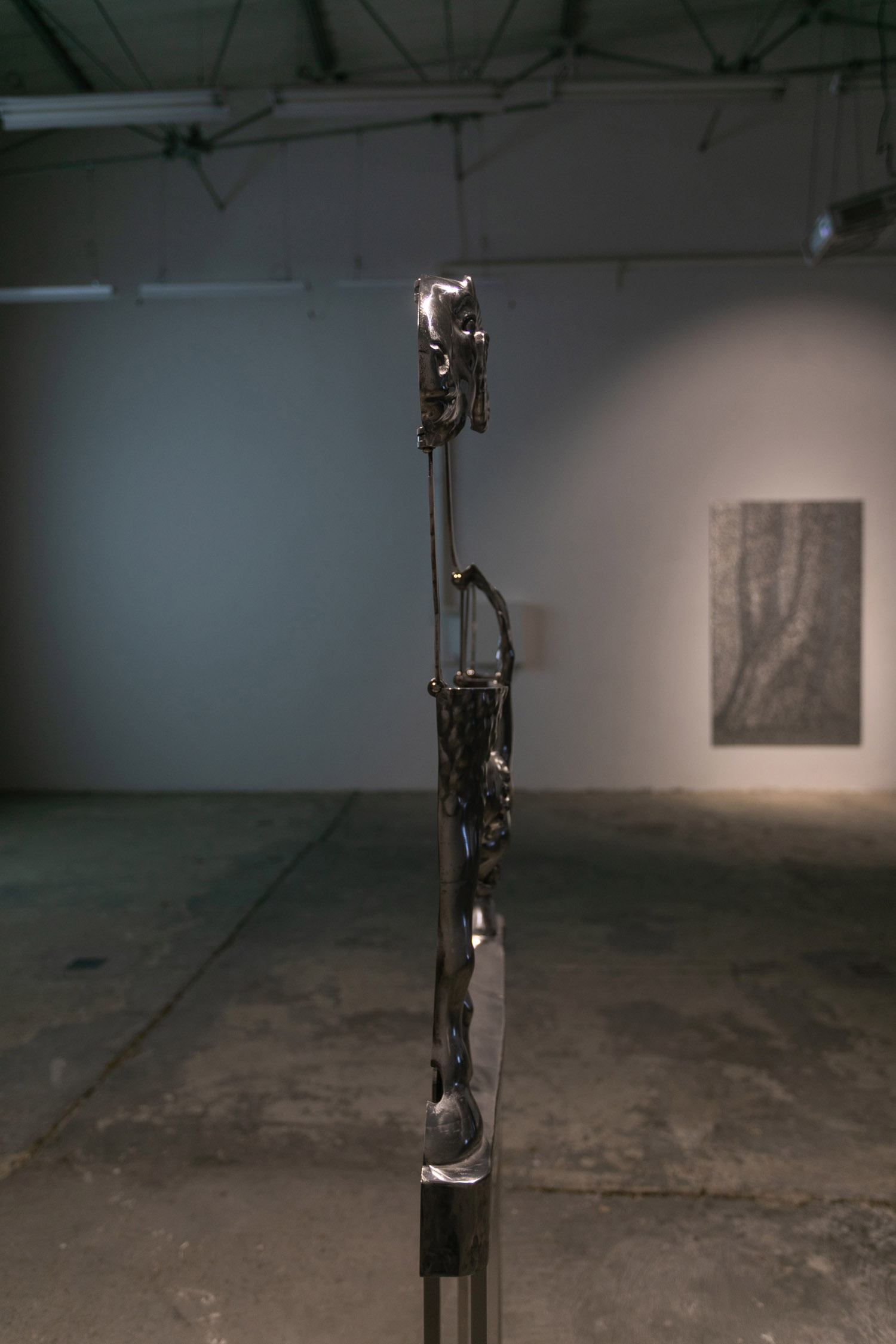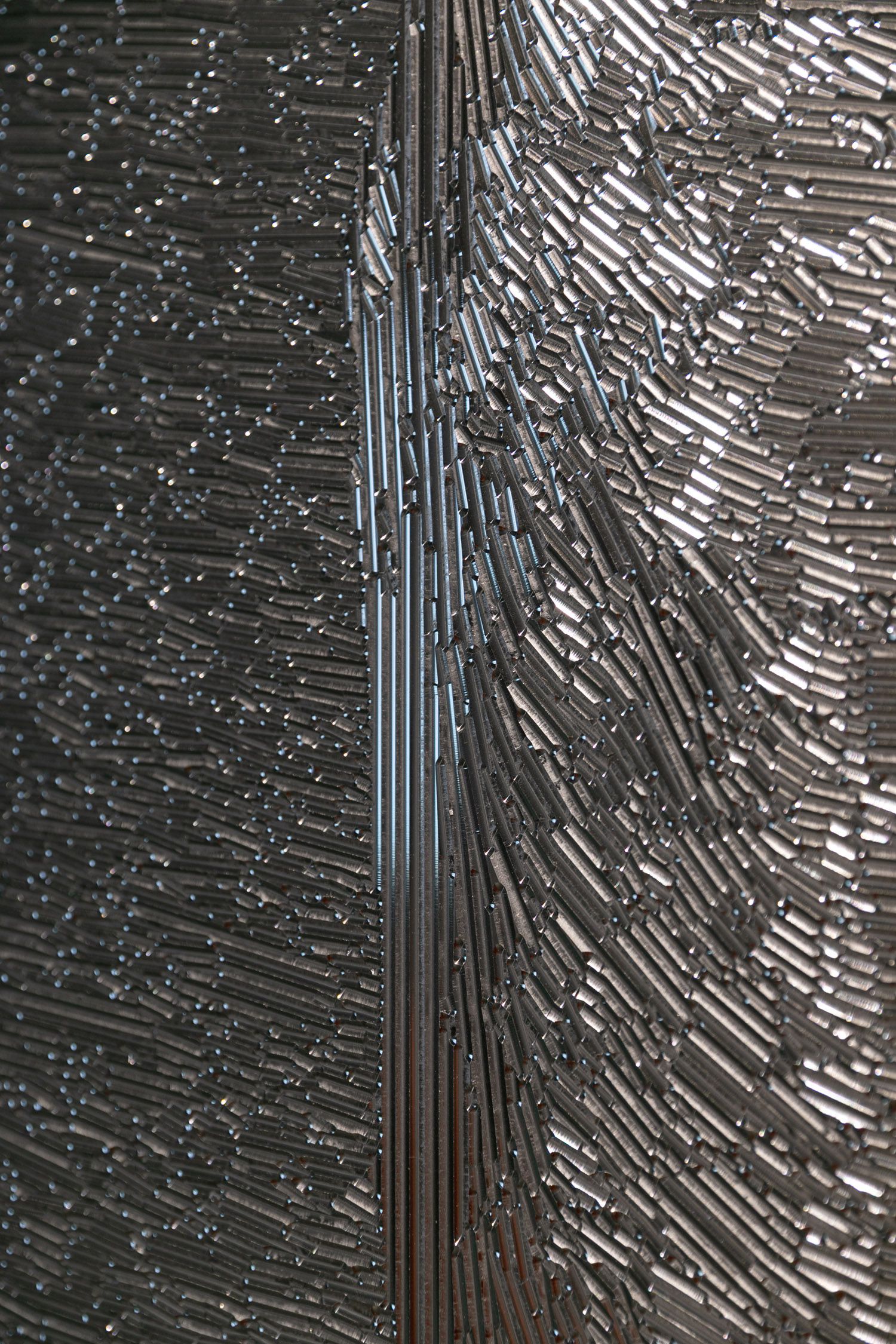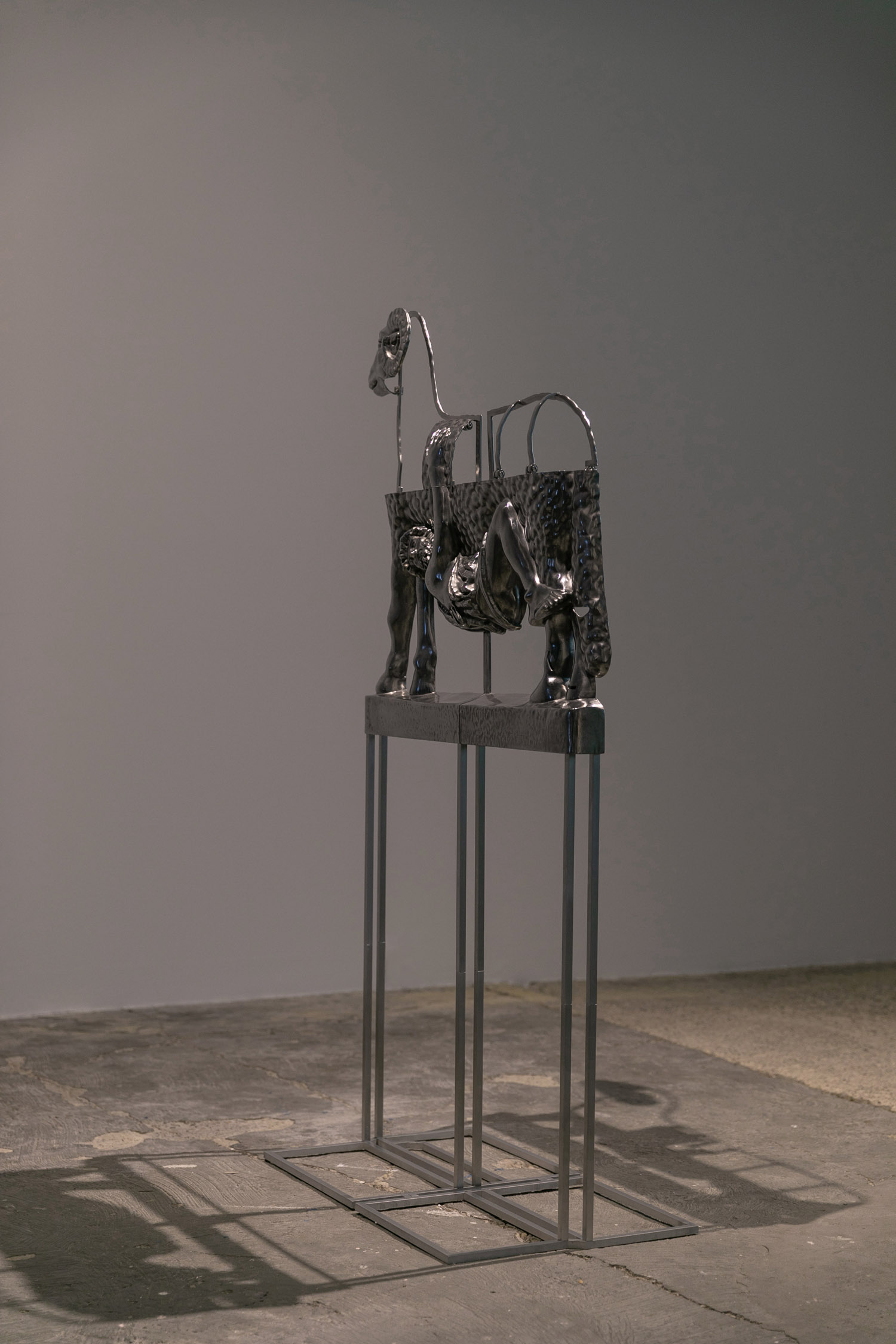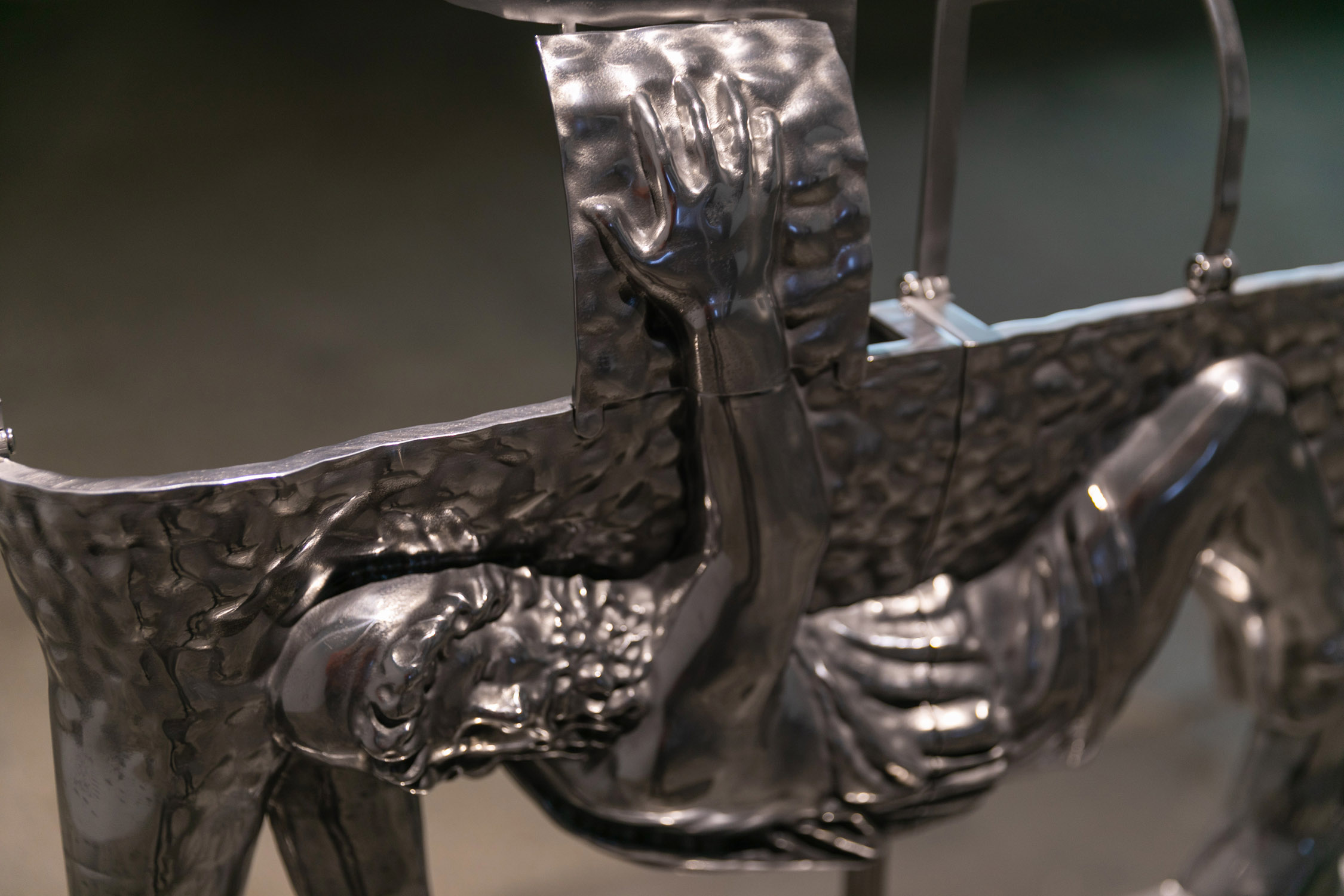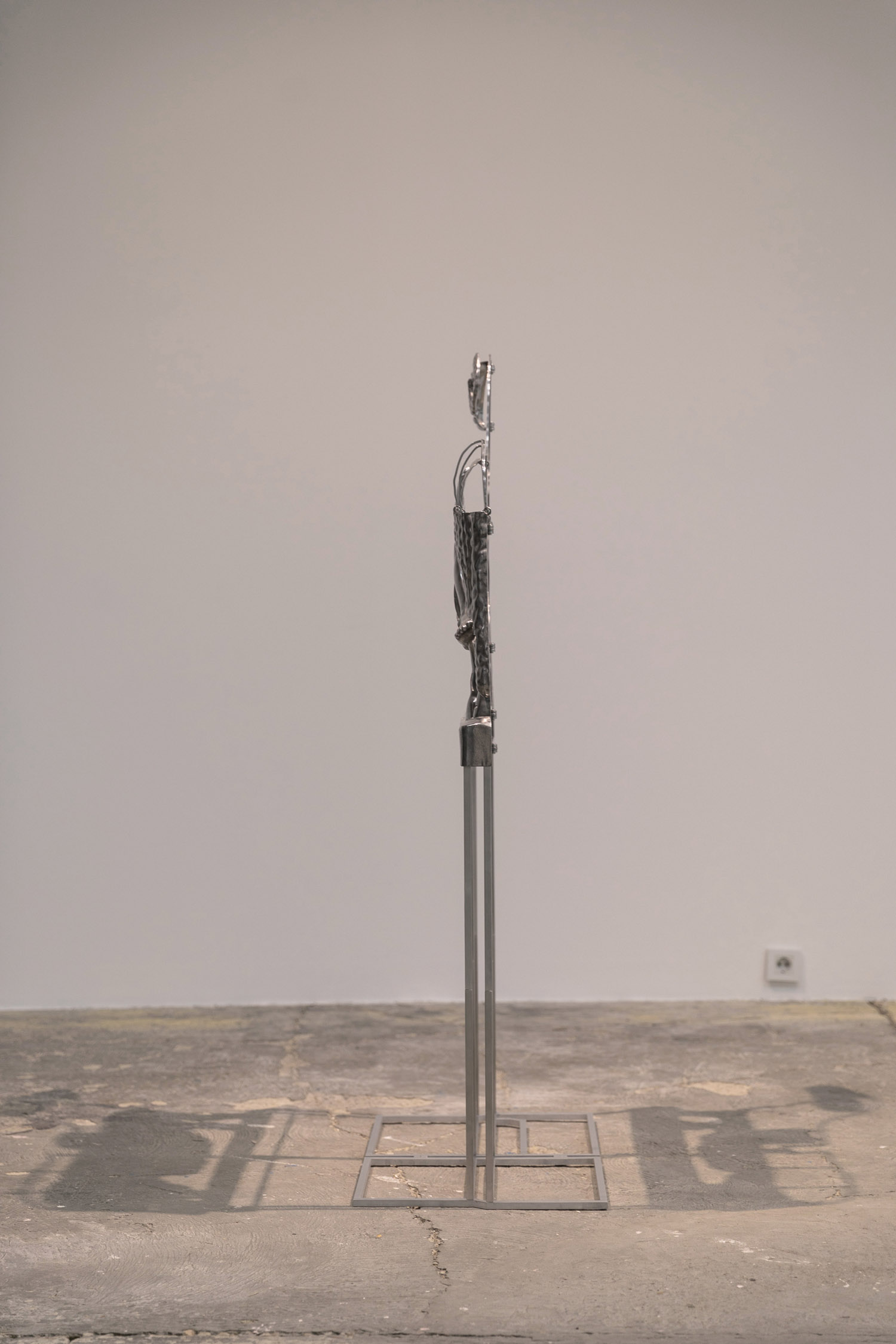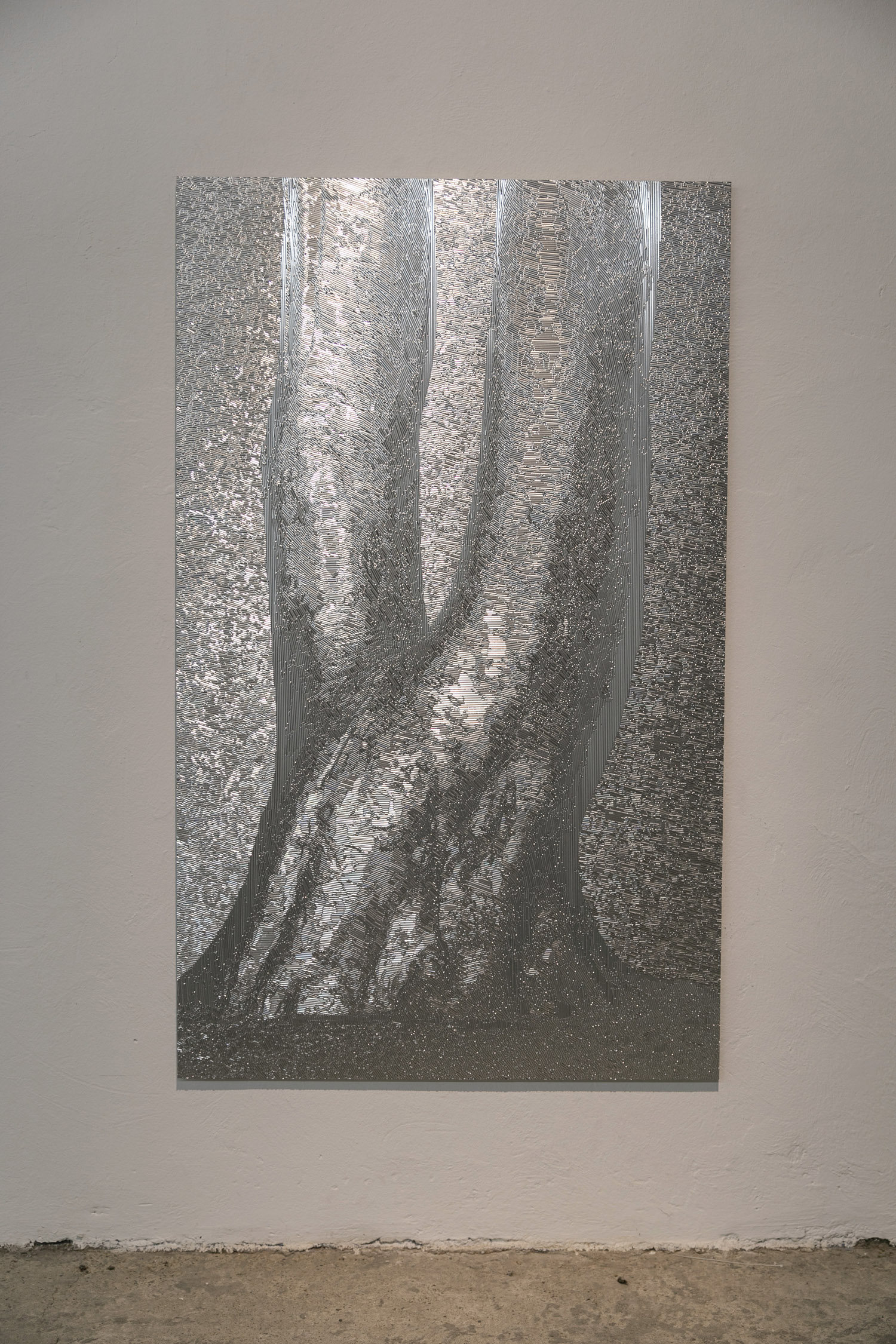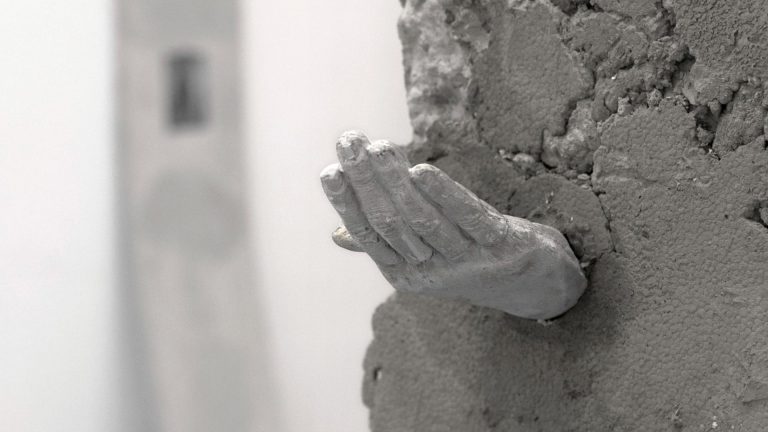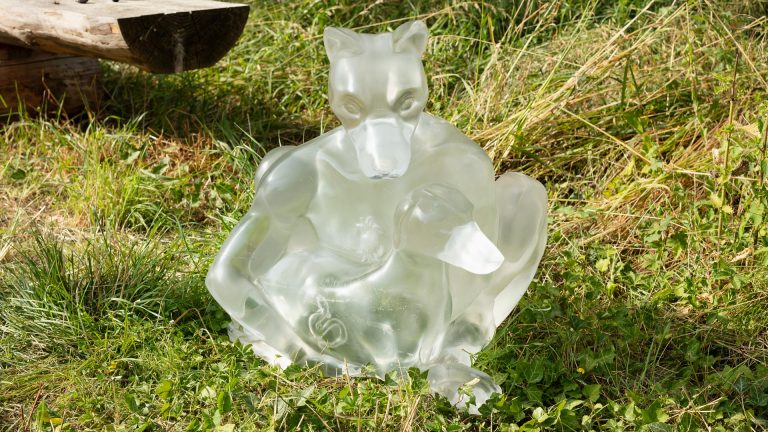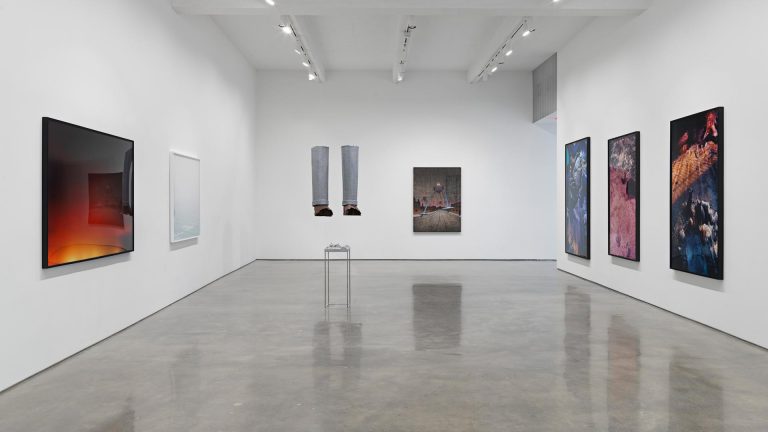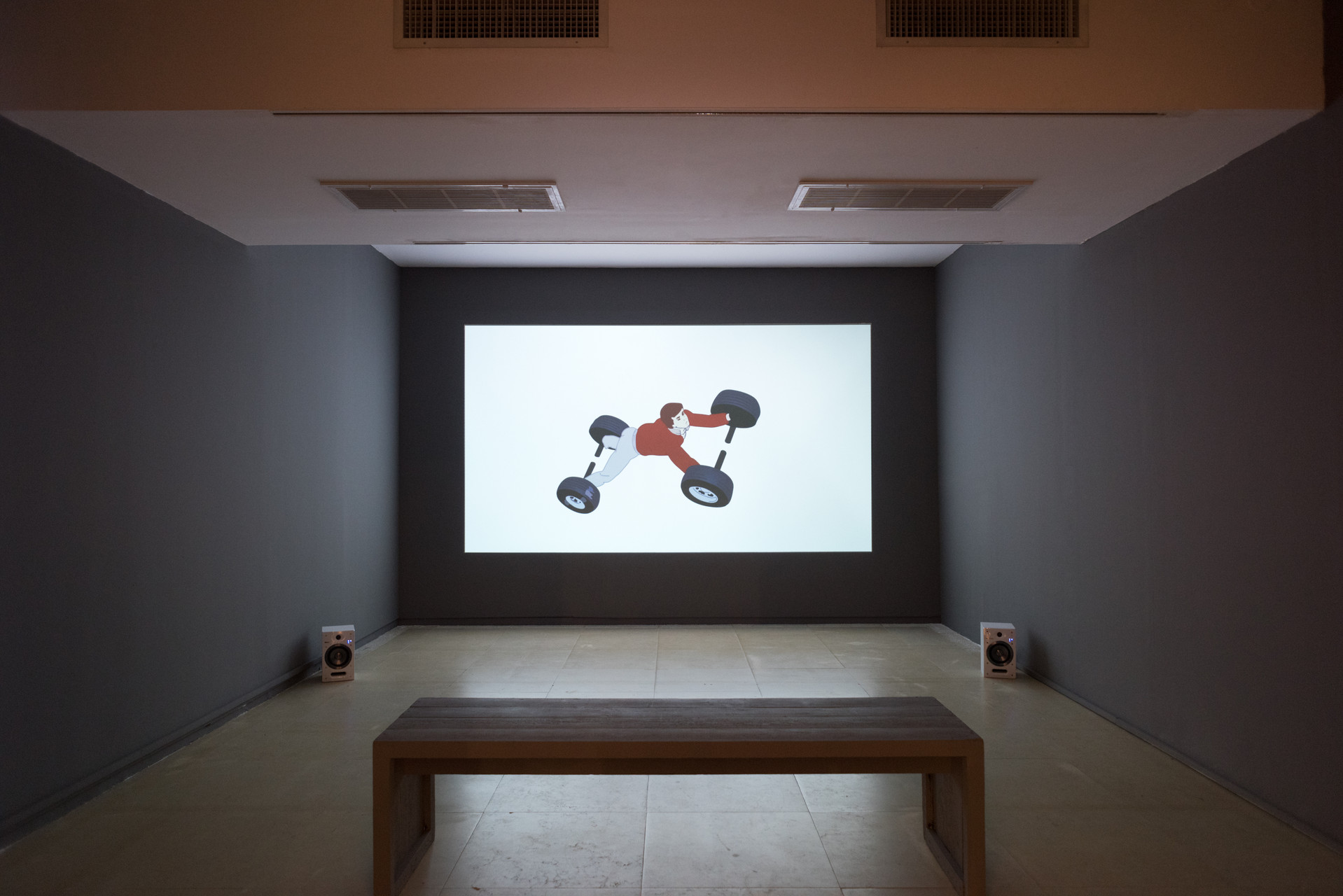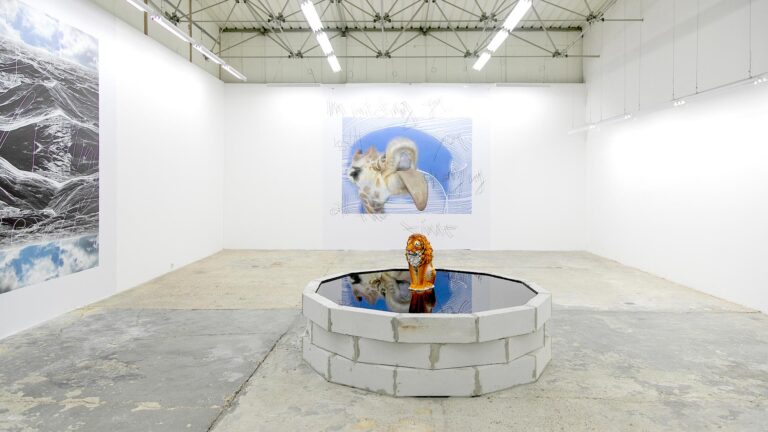Artist: Oliver Laric
Exhibition title: Calibrating
Venue: Eugster || Belgrade, Belgrade, Serbia
Date: March 8 – June 8, 2024
Photography: Ivan Zupanc / all images copyright and courtesy of the artist and Eugster || Belgrade
Defying time and the law, Oliver Laric (*1981, Austria) made a name for himself by releasing 3D scans of classical and antique sculptures free of copyright through the website threedscans.com. Both models and references over two thousand years of creation, these classical and neo-classical models have expressed the quintessence of perfection and grace, whose influence on form and balance still has a certain impact.
Continuing his research into modes of dissemination and reconstitution, and producing works based on these models, he simultaneously employs several materials and techniques, notably 3D printing, which he makes cohabit, seeming to summon up all the possible forms of incarnation that these models transmit from century to century, from models to copies, from inspiration to imitation. Oliver Laric plays with the seductive effect of this visual opposition of models whose antiquity and diffusion place them outside time, combined with technological processes ranging from digital imaging to production abandoned to the machine. To what extent does this discrepancy allow us to renew our approach? What impact do these processes have on our perception of what constitutes a “work”? As early as 1935, Walter Benjamin expressed the impact that mechanized production of works of art could have on a work of art, compromising or even changing its value and status, by affecting its aura. But contrary to this loss of value, the fascination with these new technologies and the multiplication of forms of production that liberate the concept and form of the work as much as the hand that creates it – theoretically at least, through the use of the machine – paradoxically creates an attraction and a new form of mystery that enriches our perception of art.
Based on these scanned, royalty-free models, Human with Ram, inspired by a Roman copy of a Greek original, depicts Odysseus escaping the cave of Polyphemus. With this new opus, however, Oliver Laric goes beyond his own model and seems here to question sculpture as a monumental and commemorative object, introducing fictitious mechanisms that place it at the limit of mechanical functionality. Inspired by Anna Anguissola’s work on the structural functionality of the supports in sculpture, in which she identifies various forms of narrative, he now transforms his models by combining them with different functionalities, such as the possibility of folding thanks to the addition of hinges, seeming to imply new conformations and possible uses. In the same way that Anguissola envisages other manifestations of taste, beyond utility, in these elements, Oliver Laric here questions the potential functions of a work of art, beyond their exclusively aesthetic or narrative reasons for being.
By reconstructing and manipulating these often fragmentary models, Oliver Laric is interested in incompleteness, and the place it offers to the imagination. There’s something poetic about the fragment. Like a visual ellipse, the fragment bears witness to the accidents of a history that eludes us. To reconstitute it mentally is to confront time, to defy oblivion, and to draw on a talent shared by humans and non-humans alike for reconstruction, recomposition and even transformation as a survival technique. An extension of a 2018 project entitled Betwenness, his latest animated film, Exoskeleton, (2024), functions as an evolutionary suite lasting over three minutes that explores numerous transformations and shifts, from form to form, sign to sign. Illustrating bacteria, insects, animals and landscapes in constant motion, projected onto a white background, it analyses the mechanisms of transformation and transmission, celebrating the richness and power of resilience. Just as the whole can emerge from a fragment, like a crab or an insect whose torn-off limb is reconstituted, detail fascinates Oliver Laric in that it contains the whole. And it is through synecdoche that his work envisages infinite spaces, just as a leaf symbolizes the tree, which in turn embodies the forest.
Oliver Laric has lived in Berlin for many years, but it wasn’t long before he was able to grasp the organic relationship between Central European art and the forest. What was Albrecht Dürer, the great naturalist artist, thinking when he meticulously painted a lime tree on vellum? The attentive viewer sees in the superimposition of strokes the way the artist hollowed out the depth of volumes thanks to the concentration of dark pigments, while seeking to translate the quivering of leaves through the reserves of paper from which the light emerges, or correcting the immobility of the drawing thanks to the vibration of white highlights… although produced with quite different tools, Oliver Laric’s recent works seem to extend the research of his famous predecessor. For Beech Tree (Volkspark Hasenheide, Berlin), Laric rendered a digital image extracted from a 3D scan of a tree and applied the digital milling machine to a metal plate. This image is translated through an algorithm developed by himself, which translates different shades of grey to differently angled lines, prior to being CNC routed. So, when he digitally records the shape of a tree, an organism in constant motion and transformation, he takes a piece of the living, which he restores in a fragmentary way by CNC milling. The flickering and polarization of light on the hollowed-out, chemically-treated metal plate seems to suggest a radically opposed technical approach, yet one so emotionally close to his predecessors. The result seems to have the same ambition: just as with Dürer, the fragment becomes a tool in the service of understanding, so works from the past like a modest branch can, with boldness and the complicity of new technologies, construct, from the trace, an infinity of narratives and new forms of enchantment.
-Matthieu Lelièvre
[1] Walter Benjamin, Das Kunstwerk im Zeitalter seiner technischen Reproduzierbarkeit, 1935.
[2] Anna Anguissola, Supports in Roman Marble Sculpture: Workshop Practice and Modes of Viewing, 2018.
[3] In marble sculpture, the prop, a reserve of the cut stone, has long been regarded as a single structural reinforcement preventing the fragility of elements exposed to breakage, such as the arms of a statue, or counteracting the unbalanced weight of a figure resting on fragile feet.
[4] Albrect Dürer, Lime Tree on the Bastion of the Burgberg in Nuremberg, c.1493-94, Museum Boymans-van Beuningen, Rotterdam.


